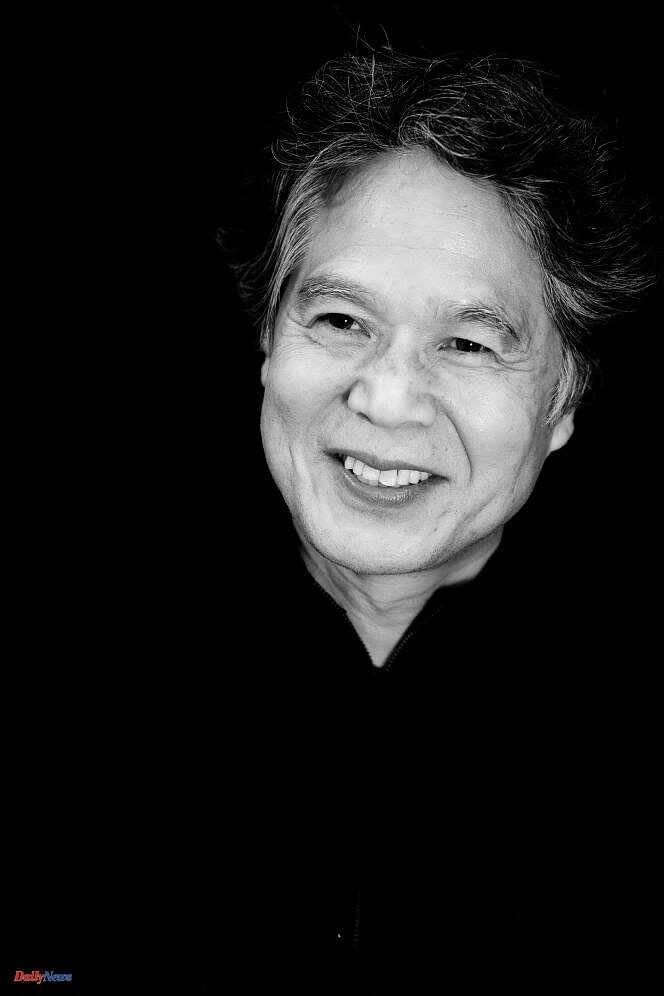An artist who revolutionized, through his invention, his poetry and his audacity, the editorial proposal for early childhood, Katsumi Komagata died in Tokyo on March 29, at the age of 70.
To give free rein to his finesse of universal significance, Katsumi Komagata had to ward off a childhood trauma. When a teacher asks him to draw his school, little Katsumi prefers pink to the white of reality. And here he is suspected of not distinguishing colors. Soon subjected to tests which invalidate the verdict, the child nevertheless retains a fear which leads him to choose the shape and the design, freeing himself from chromatic conventions.
Here he is a graphic designer, learning in the workshop of engraver and poster designer Kazumasa Nagaï. Soon he left for the United States and worked for CBS in New York (1977), obtaining the Silver Medal of the Artistic Directors Club (1981), before returning to Japan in 1983 and founding there Tokyo has its own graphic design studio, One Stroke, and participates in the creation of visual identities in the fashion sector (Comme des Garcons, in full expansion; Zucca, a new house just born). But the birth of his daughter Aï in 1989 changed his priorities. He who had discovered children's books at the Museum of Modern Art store in New York and was enthusiastic about the world of photographer Tana Hoban as well as the daring of Leo Lionni and Bruno Munari, decided to communicate with the small by the image. He creates series that he submits to the child from the age of 6 months, retaining only those that make him react. Thus was born the Little Eyes series, which plays on the child's first name, the English language like Japanese, the simple syllable "Aï" saying love like indigo blue.
Accompanying the development of her daughter, Katsumi Komagata moves gradually from abstraction to the figurative, then to the narrative. If the first ten titles appeared with the specialized publisher Kaisei-Sha (1990-1992), the artist very quickly opted for self-publishing, with One Stroke. A guarantee of total freedom as a response to the reluctance of publishers worried about the difficulty of reproduction and the fragility of the object. Accompanying the awakening of the young reader, it focuses on their intellectual and sensitive development, their learning of autonomy, while making them aware of the fragility of the book object, the wear of paper, the requirement of manipulation, the taste for textures as well as colors.
Ingenuity
To the importance of narration, Katsumi Komagata adds variations on form, cuttings and changing formats, with the triptych Blue, yellow, green (1994).
Les Trois Ourses, an association created by librarians who campaign for the dissemination of these graphic works, are enthusiastic about the Japanese artist's project and impose it in France, from the exhibition “1, 2, 3… Komagata », which they presented at the Maison du livre, de l'image et du son in Villeurbanne at the end of 1994. The unexpected, the surprise at the heart of the work's imagination are so well understood that the installation circulates abroad, in Europe to South Korea and Japan. Through its questioning and its relevance, the scope of the work is universal, especially since by choosing to accompany the awakening of his daughter over the years, the artist avoids any overhang and maintains an ingenuity which disqualifies with happiness the age divide.
Even more than his collaborations with the association Les Doigts qui rêvents and the Center Pompidou, from which Feuilles (2004) and Plis et Plans (2003) were born, or his creation intended for newborns in Grenoble (L’Endroit where dorment les stars, 2004), it is his creation of the catalog for the exhibition of the centenary of the birth of Bruno Munari, Da cosa nasce cosa, at the Itabashi Museum, in Tokyo in 2007, which says the place of Komagata. Like his model, the artist believes in sharing through experimentation in the workshop and increases the number of meetings with both children and adults.
Now, thanks to the Trois Ourses, who distributed his creations throughout Europe for a long time, designing suitcases to disseminate his works and methods in libraries, and thanks, more recently, to the Grandes Personnes, where, after offering his reversible puzzles ( Reverso, 2013), Brigitte Morel published Jours de lune and Pacu Pacu (2021), then Pon Pan, Bon as well as Et après? (2024), Komagata is recognized as a primordial creator for early childhood.












